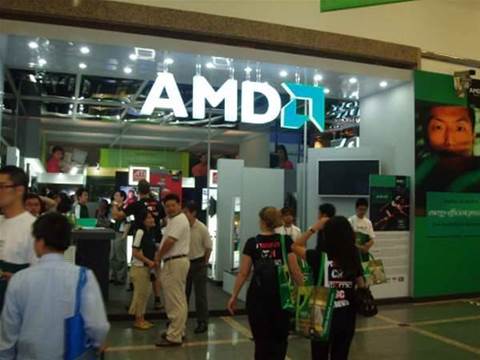AMD is preparing to enter the low-power and ultra low-power processor space with a new type of processor core dubbed 'Bobcat'.
Bobcat will consume 1W to 10W of electricity, the company revealed at its Technology Analyst Day at its Silicon Valley corporate headquarters.
The traditional desktop and server market will be served by the 'Bulldozer' processor core consuming 10W to 100W. The first processors based on the design are slated for 2009.
The new design approach will allow AMD to build chips from standard building blocks, adding components such as a memory controller and a graphics processor to form the actual processor.
Bobcat targets low-power consumer devices such as digital televisions, ultra mobile PCs and high-end cellphones. A server version of the chip will feature between eight and 16 processor cores and allow for variations in the amount of cache memory.
The Bobcat and Bulldozer names refer to construction tools. The former is used to erect large structures, whereas the latter is better suited for granular landscaping projects.
Similarly, AMD intends the two processors to be used for heavy loading in the enterprise and more elegant mobile applications respectively.
The mobile and embedded application space is crowded, however, and AMD is late to the game.
"Bobcat is the thing that we have been missing for so long from AMD," said Jim McGregor, a director at analyst firm In-Stat.
The ARM architecture currently dominates the smartphone space and Mips is widely used in embedded systems ranging from Cisco routers to Sony's PlayStation 2.
Intel's Silve rton is believed to be targeting the same market as Bobcat. The Silverton platform was unveiled in March 2006, but the chipmaker has not provided additional information.
AMD claimed that the market is only now getting ready for x86 to enter the mobile and embedded spaces. The architecture has a large ecosystem of development tools, allowing device manufacturers to bring products to market sooner.
"There is [increasing] value in creating a productive software environment and x86 with the toolset it's got and the reuse of code ... can create a very productive environment. It's a good fit," said AMD chief technology officer Phil Hester.
But McGregor warned that AMD's projected launch date is still far off. Mobile systems, meanwhile, will have to digest an abundance of new technologies such as ultra wide band and WiMax.
These are likely to change processor design requirements and could influence AMD's Bobcat.
AMD takes aim at low-power processors
By
Tom Sanders
on Jul 30, 2007 11:17AM

Got a news tip for our journalists? Share it with us anonymously here.
Partner Content

Channel faces AI-fuelled risk as partners lag on data resilience, Dicker Data summit told
_(11).jpg&h=142&w=230&c=1&s=1)
The Compliance Dilemma for Technology Partners: Risk, Revenue, and Reputation

Tech Buying Budgets for SMBs on the Rise

Promoted Content
From Insight to Opportunity: How SMB Service Demand is Shaping the Next Growth Wave for Partners

Tech Data: Driving partner success in a digital-first economy






.jpg&w=100&c=1&s=0)
_(8).jpg&w=100&c=1&s=0)









